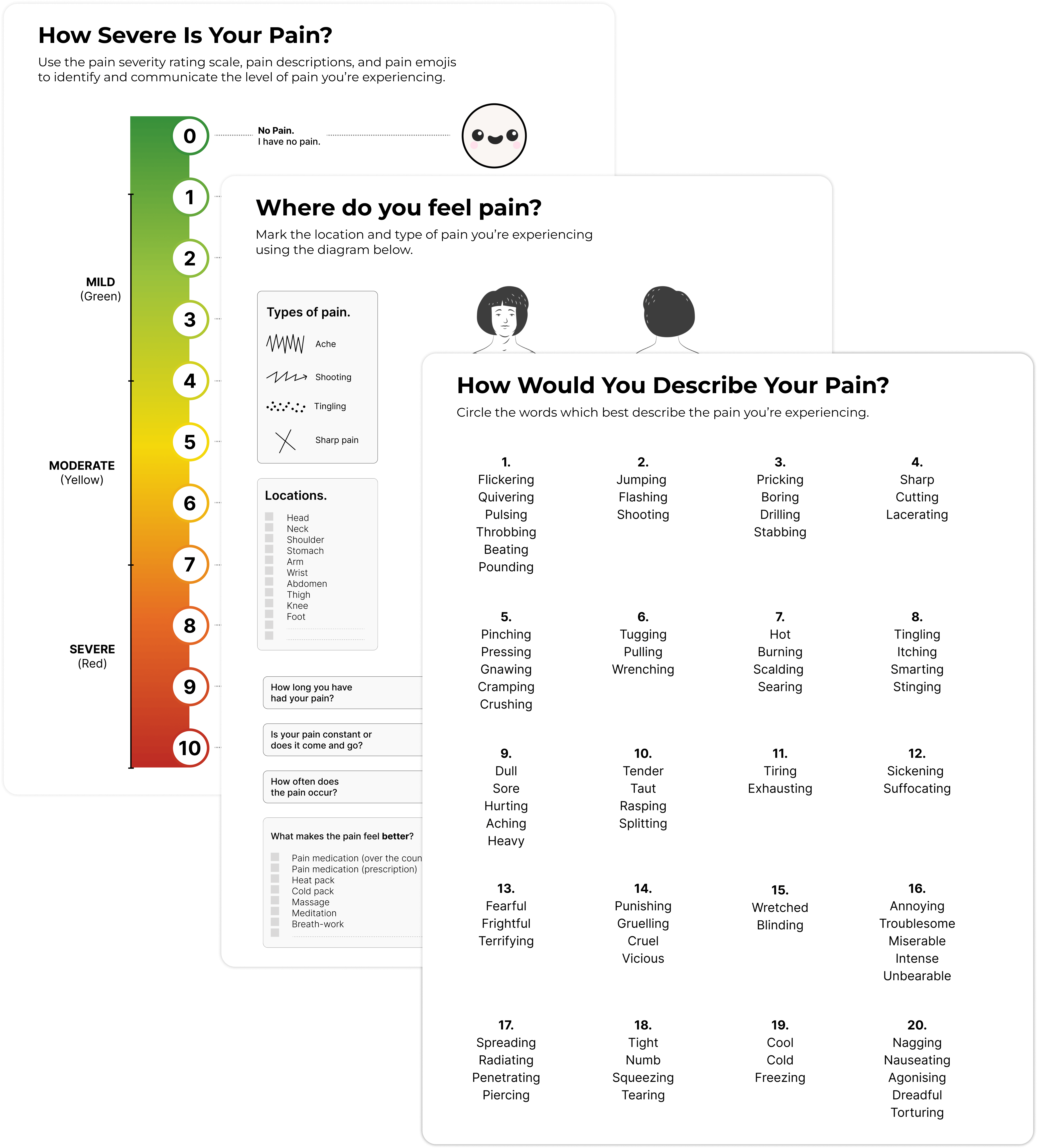
Understanding how to describe pain accurately isn’t easy but it can have a big impact on how your pain is diagnosed and treated. We’ve created a set of simple, visual worksheets that help you to find the right words to describe your pain, locate the pain on your body, explain the type of pain that you’re experiencing, and rate the severity of your pain using descriptions.

Identifying the severity of your pain using only a 0-10 scale can be difficult, especially if your baseline for pain isn’t zero. To help you describe pain, we’ve adapted the Defense and Veterans Pain Rating Scale, which includes…
Describing pain is often hard because of the wide variety of ways that pain can feel.
For example, an itching pain in your arms could indicate a completely different issue to a pinching pain or a throbbing pain in the same location. The difference between a tugging pain and a pulling pain might be small but could also indicate a difference in pain severity.
When your pain is so severe it begins to become distracting or impacts your ability to communicate. It can be especially difficult to find the right words to describe your pain.
Using the McGill Pain Questionnaire, we’ve included a page in our ‘how to describe pain’ worksheet that helps you to identify the specific words to describe the pain you’re feeling.
When you’re experiencing pain, it can be hard to describe exactly where the pain is located, especially if the pain is radiating, changing, or in multiple locations.
The ambiguity of pain descriptions means that it can be important to not only locate your pain but also describe the specific areas affected. This includes the different types of pain experienced in different locations.
We’ve adapted a version of the McGill Pain Questionnaire and patient intake surveys so that you’re able to…
We’ve also included some additional questions to help you locate and describe your pain in even more detail.
💡 Tip. You could print this page of the worksheet out multiple times to illustrate different types of pain or different pain conditions.
We’ve created this worksheet to help you describe your pain with more accuracy and detail. Knowing how to describe pain can be helpful in a number of situations, including:
If the download doesn’t happen automatically, you can follow the instructions below:
1. Click the download button at the top of this page.
2. You’ll be redirected to a folder on Google Drive.
3. Click on your preferred PDF format (US Letter or A4).
4. Then tap the download arrow in the top-right-hand corner of the screen.
5. Once you’ve downloaded the file, you should be able to locate it in your downloads folder (on your desktop) and open it in a PDF view.
Note. If you’re on a mobile device, you might need to use an app to open the .zip folder after you’ve downloaded your worksheet PDF.
Because Bearable is a company founded at operated by people with chronic health conditions for people with chronic health conditions. AND even though our app is the number one symptom tracker in the USA and UK (that you can also use for free). We try to create as many free resources as possible for people who need some help managing their health.
You can check out some of our other free resources using the links below.
We couldn’t do this without you. So if you have an idea for a helpful free resource, let us know by getting in touch with jesse@bearable.app